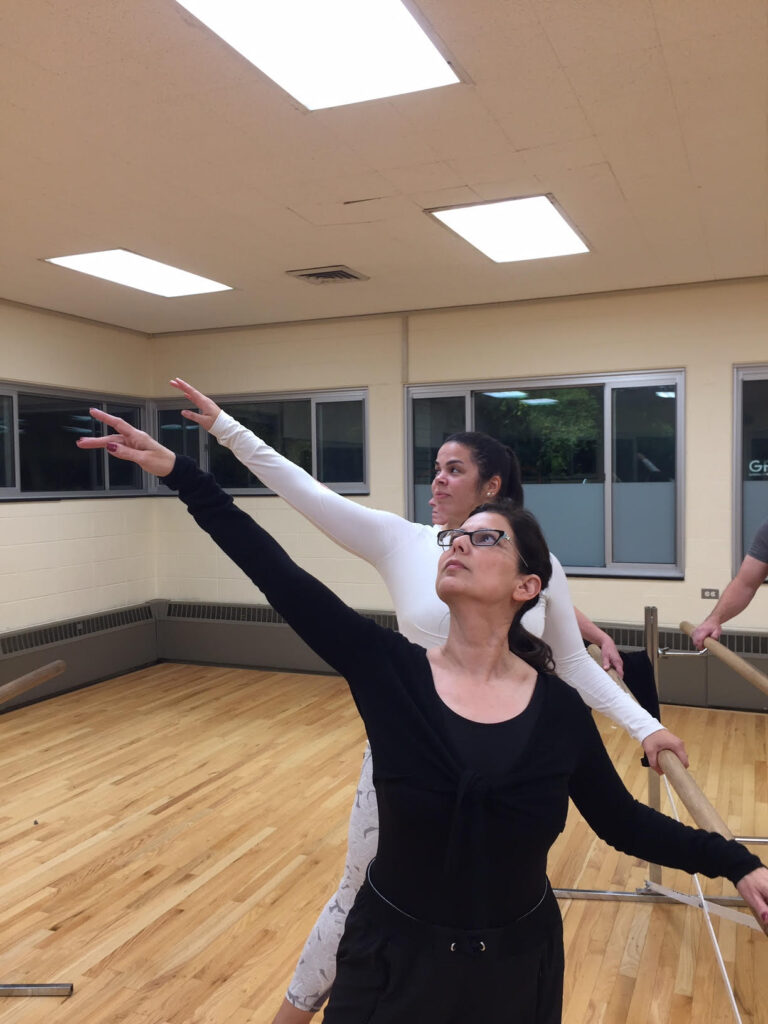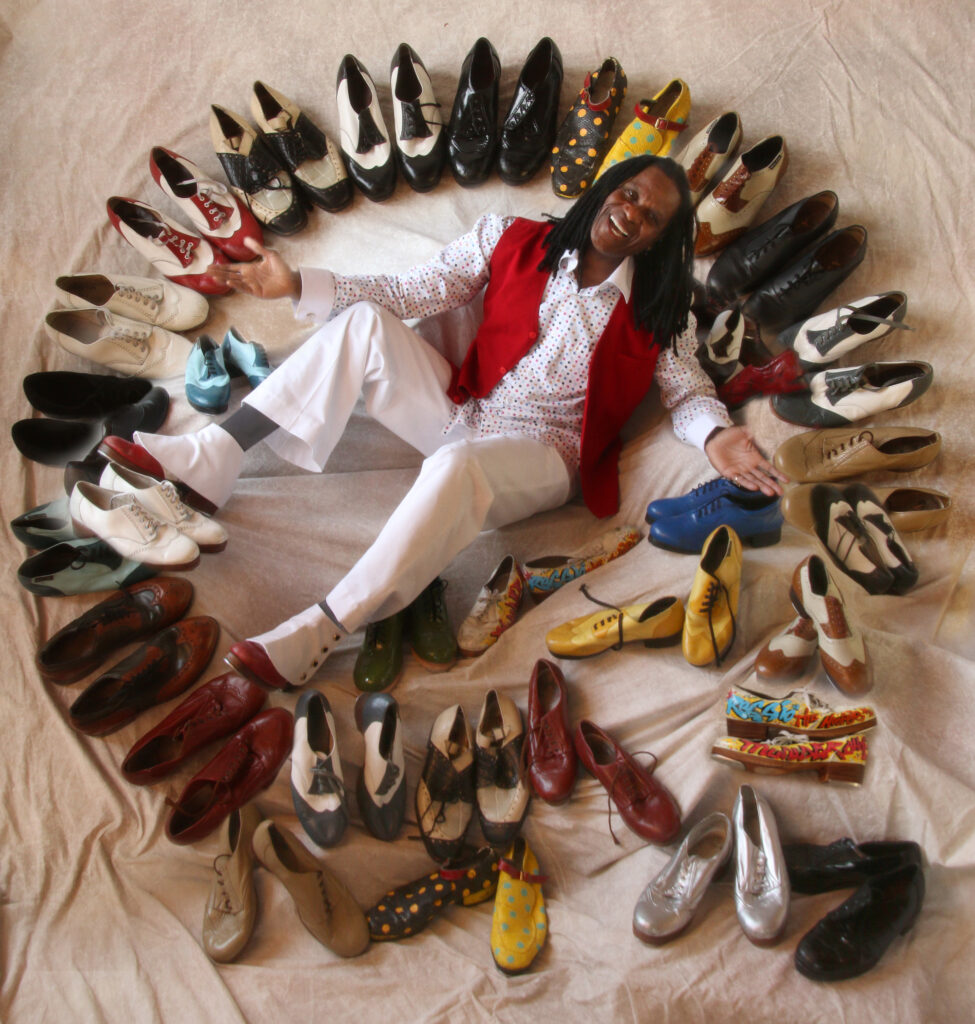
As dance studios ramp up for the back-to-school crowd, a new crop of 3-year-olds who are starting from scratch will bring fresh faces to the student community. But what about teens and adults who are just finding dance for the first time? Or those who danced when they were younger and are returning after years, or even decades, away?
Often, these students are all combined in a single level, as part of a recreational-dance division separate from pre-professional training programs. So how can dance teachers ensure a safe, productive, and rewarding environment in adult classes? It can be a challenge for even the most seasoned professionals, but here three educators and one longtime recreational dancer share their tips for making it work.

Teaching Online Has Its Benefits
Catherine Tully studied dance with Maria and Marjorie Tallchief and performed with Chicago City Ballet. She taught adult beginner ballet classes at a suburban Chicago park district for two decades and now teaches group and private classes online out of her home. Tully’s students typically range in age from 20 to 70. She says she enjoys teaching adults because they are hungry to learn. “They are there because they want to be there,” Tully says. “They’re very dedicated to improvement; they’re very dedicated to the art form; they’re like sponges. Especially with women, there are so few opportunities to feel beautiful and experience the artistry of moving without judgment.”
Tully enjoys the challenge of teaching online and finds it removes barriers for students who may have difficulty getting to a studio. She records the classes so those who learn at different paces can review it on their own time and gauge their progress over time.
Students have told Tully they feel freer to take chances and explore artistic expression online compared to an in-person class. They also don’t have the luxury of following the person in front of them—giving students more responsibility in picking up combinations. “They’ve made a lot of improvement marrying feeling with dance by feeling that people aren’t watching them while they’re trying it,” she says.

Differentiating Teaching Styles and Training Environments
Tully says teaching adult recreational ballet classes is an advanced skill that doesn’t necessarily translate from teaching young children, pre-professionals, or professional dancers because of the vast age and ability range. “I would not ever recommend a beginner teacher teach an adult ballet class,” she says. “You can do a lot of damage to people. You have to create a very supportive, welcoming environment, and your multitasking ability has to be really up to snuff. You might ruin somebody’s wanting to do ballet forever by teaching one adult ballet class that isn’t good.”
Alexa Berkowitz started dancing at a young age and majored in dance for college, but she now works as a theater-production manager. While in graduate school for gender and women’s studies, Berkowitz explored self-efficacy and body image in Western concert dance. She took Israeli folk dance at a local synagogue and compared the experience to adult beginner ballet and jazz classes she’d taken a few years earlier. As a true beginner to Israeli folk dance (and not knowing anyone), Berkowitz felt intimidated at first, but found that her confidence quickly rose. “I found that it was much more body-positive and affirming in the Israeli folk dance classes,” she says.
Adult students may also benefit from a more open dress code, turning away from mirrors, and focusing on verbal corrections in all dance forms. Berkowitz says not having mirrors also encouraged the folk dancers to make eye contact and use each other for corrections. Students are then able to see their progression by guiding others, which curbs the boredom they might feel when material is repeated in a single-level class. Berkowitz says she also appreciated that the instructors used verbal corrections over tactile ones and were less concerned with pinpoint technicality. She felt more confident in sweatpants than in tights and a leotard.
“Being able to express myself in something that made me feel comfortable and good—as opposed to being prescribed a certain uniform—I thought was very body-affirming,” she says. “There’s a balancing act with allowing your students to be comfortable with what they’re wearing and being able to look at their lines and make sure they’re actually learning the steps.”
Fostering an Inclusive, Welcoming Environment
Teens and adults who start dance later in life may have various motivations, including fitness and mobility, and having a social outlet.
Dallas native Dereque Whiturs performed with Alvin Ailey American Dance Theater prior to moving to Chicago. He now teaches at Chicago High School for the Performing Arts as a dance instructor in the Theater Department, as well as at Deeply Rooted Dance Theater, where he is the lead instructor of Deeply Rooted’s Youth Ensemble and of Mature H.O.T. Women, a dance class for “health-conscious, optimistic and triumphant” women—H.O.T. for short. “I enjoy watching these women grow,” Whiturs says. “They’re women who are not looking to have a career—or continue to have a career they used to have in dance. Their mind, body, and spirit are affected by what we do in the class.”
Whiturs says his students are very welcoming to newcomers, who become part of a community that extends beyond the studio. “They created their own group chat,” he says. “It’s a whole family. These women are so excited to have other people come in. The new people just fall right into place.”

Meanwhile, Reginald “Reggio the Hoofer” McLaughlin’s adult tap program has grown to five levels over time. He taught for Urban Gateways and, for 29 years, has led rhythm tap classes for youth and adults at Chicago’s Old Town School of Folk Music. “They get hooked and won’t go,” McLaughlin says. Students have stuck with him for a decade or more, so he added levels to keep their training moving forward. New students can observe classes and self-select the class that’s appropriate for them, rather than go through a formal level-placement process. “There’s never been any cliques in my class. My students are always very friendly with new people. It’s become just like church on Sunday,” says McLaughlin. “They look forward to it.”
Even online, Tully’s students have formed a supportive community—some taking her classes consistently for 20 years. She hosts an in-person meet-up every six to 10 weeks for those craving a social outlet. Others attending class simply for exercise have the option to log in and log off, with no pressure to socialize. “Over time, it becomes this nest of fellow dance lovers,” Tully says. “I try and foster that. They are the very people who are going to see ballets and are supporting ballet.”
Teaching Levels Separately vs. All Together
While many recreational divisions have a drop-in option, having students enroll in sessions allows instructors to progress through weeks and months with the same students, even if they are starting at different levels.
Berkowitz advocates for level progressions in Western dance styles but thinks folk dance classes should remain all one level because classes are more about cultural bonding. “It was a real community experience,” says of her Israeli folk-dance experience. Berkowitz’s class would celebrate students’ birthdays with food. And socializing during class was not unusual; people opted in and out of certain dances at will. “That’s all part of being in the Jewish community,” she says.
Whiturs says a single level also works for Mature H.O.T. Women. His curriculum combines floor barre and Horton technique. He says he’s conscious about pacing but doesn’t water down the training. “I challenge them,” he says. “I don’t do just step-touch, step-touch. They’re doing laterals; they’re doing figure-fours; they’re doing attitude turns—they’re dancing.”
Teachers serving multiple levels of dancers in a group may find it beneficial to offer progressions and regressions as options during an exercise. But Tully says that doesn’t always work. “Safety has to come first,” she says. “When you give different levels, the beginners try the hard stuff all the time. They want to try harder and think by doing the more advanced option they will get better. In ballet, that’s dangerous.” Tully says she varies tempos within an exercise to cater to multiple levels and gives options to work on just the upper or lower body.

McLaughlin, however, thinks having different levels works for tap, and from working with older adults, he knows that they can tap dance at a high level. McLaughlin made ends meet tap dancing in subway stations before forming a duo with Ernest “Brownie” Brown. “I danced with my mentor, Brownie, until he was, like, 91-and-a-half,” McLaughlin says. “The thing about tap is: There’s no discrimination. It doesn’t matter how big you are. There are no gendered steps. And then there’s no age limit on it. It’s a happy dance.”




